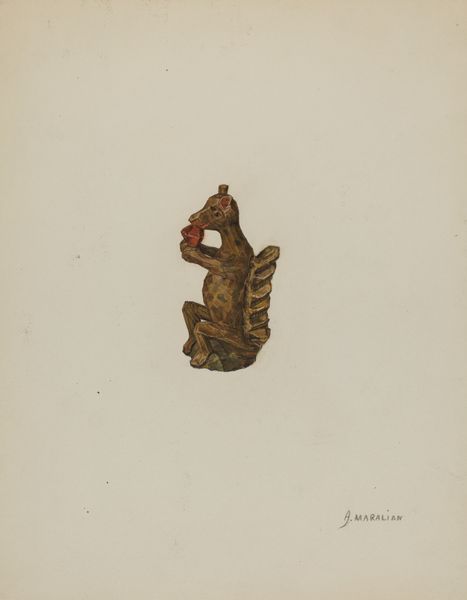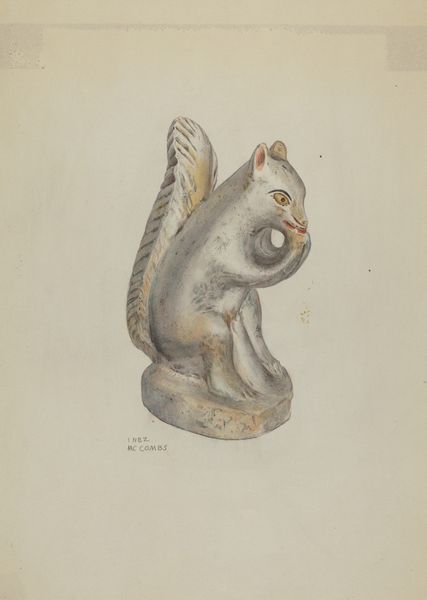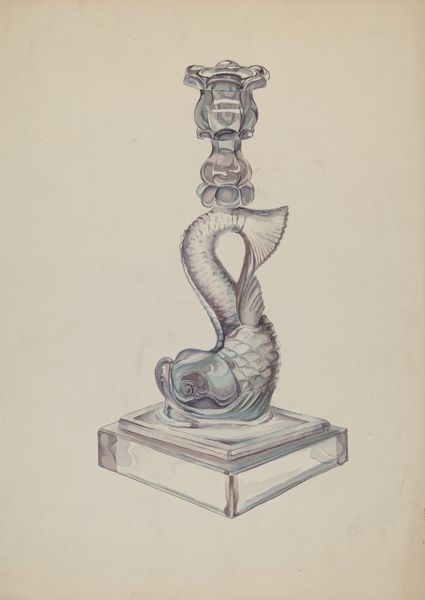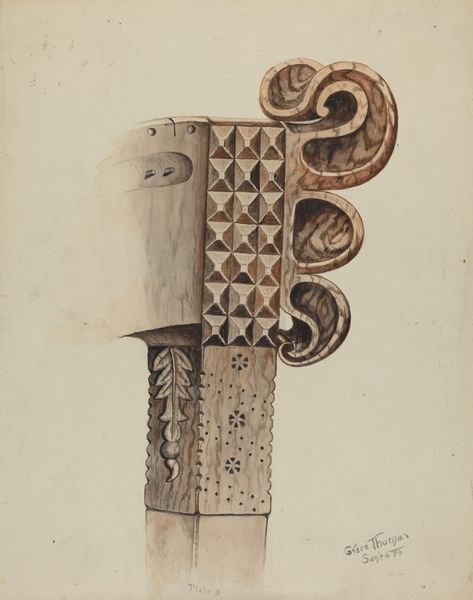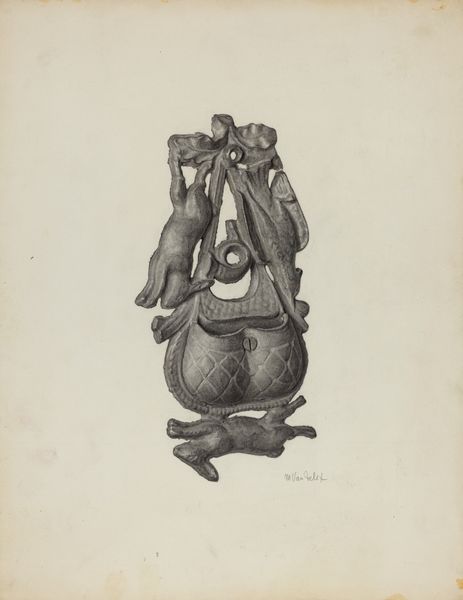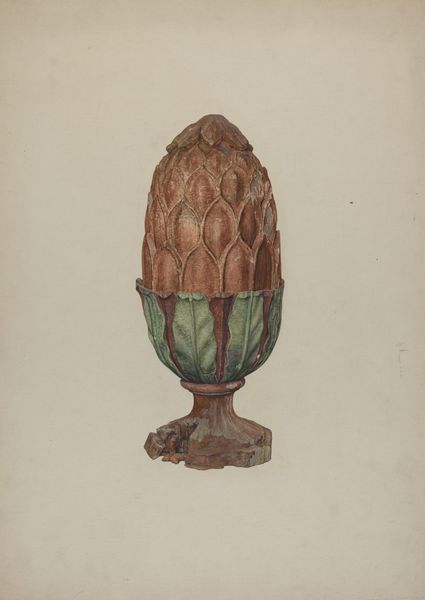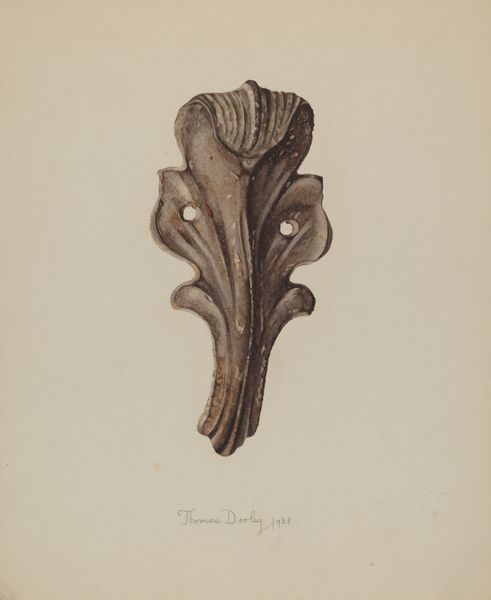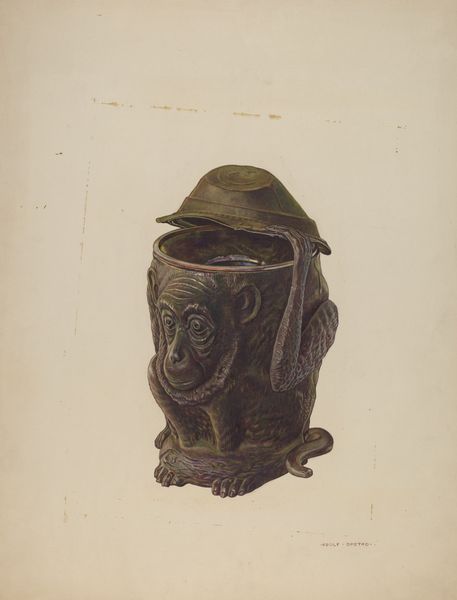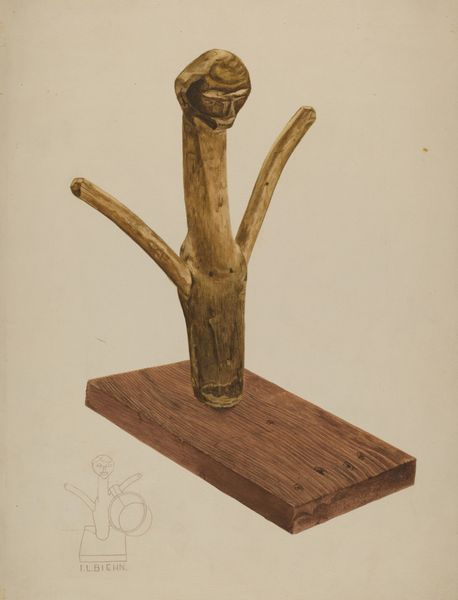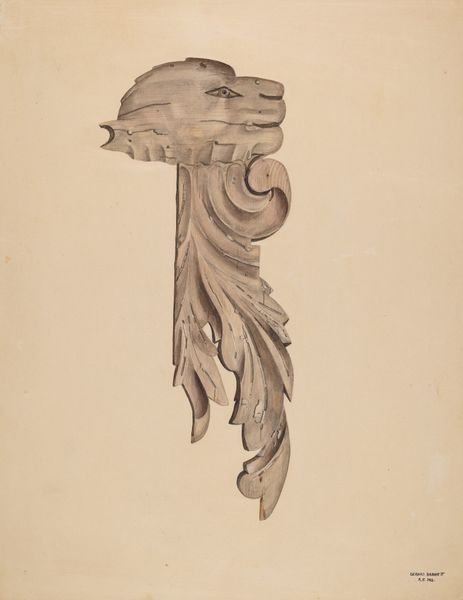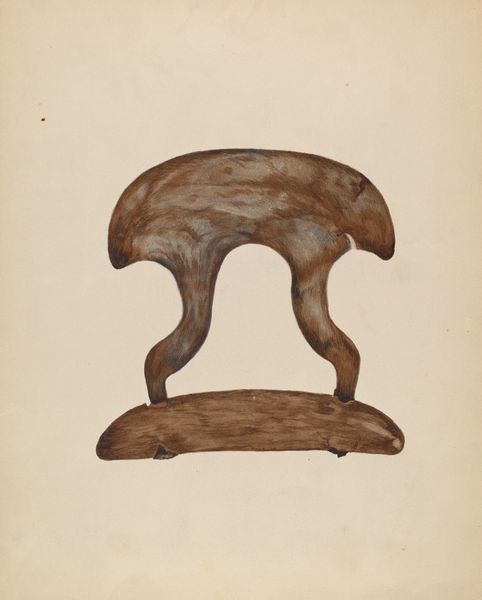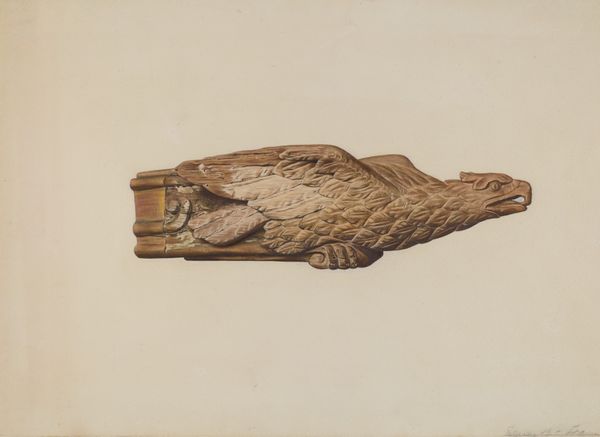
drawing, watercolor
#
drawing
#
charcoal drawing
#
figuration
#
watercolor
#
coloured pencil
#
folk-art
Dimensions: overall: 29.1 x 22.9 cm (11 7/16 x 9 in.) Original IAD Object: 5 1/2" high
Copyright: National Gallery of Art: CC0 1.0
Curator: I’m immediately struck by the rustic charm of this piece. The drawing's muted colors give it a certain antiquated air, almost as if unearthed from a forgotten storybook. Editor: It is indeed quaint. Let’s delve deeper. We have here "Pa. German Squirrel Figure," created by A. Maralian, dating roughly from 1935 to 1942. It employs watercolor, charcoal drawing, and colored pencil. What visual pathways can we trace? Curator: Well, squirrels are potent symbols. They represent industriousness, preparedness, and the gathering of resources. But the somewhat stiff posture and presentation of the creature evokes folk-art traditions, a connection to simpler, agrarian lifestyles where animals often held a near-mythical significance. Editor: I concur, yet, notice how Maralian's line quality emphasizes contour and volume. The textures, especially the quasi-geometric rendition of the tail and fur markings, give the subject more solidity. This tension between surface and depth makes me see both its artistic presence and its potential for allegorical messaging. Curator: Exactly! The formal elements enhance the cultural memory embedded in such imagery. In Pennsylvania German traditions, for example, natural motifs intertwined heavily with spiritual beliefs. The squirrel holding what looks like an acorn, further signifies a bounty, good fortune, or providence, particularly relevant perhaps, given the era in which this work was created. Editor: The tonal variations, especially in the shadowed underbelly, do introduce depth—a kind of chiaroscuro that contrasts with the relatively flat backdrop. The piece almost pulls itself out of the page. Curator: Perhaps that emergence represents something deeper; a connection between the familiar and the transcendent. This isn’t merely a depiction of a squirrel—it is an echo of values passed down through generations. Editor: Well said. It gives food for thought, a dialogue between our eyes and ancestral knowledge. Curator: Indeed, and I hope listeners found their own symbolic path in our analysis as well!
Comments
No comments
Be the first to comment and join the conversation on the ultimate creative platform.
